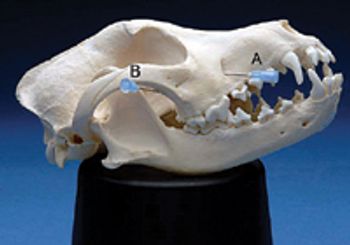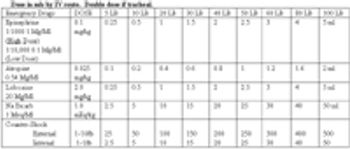
Nutrigenomics can reduce pain in osteoarthritic dogs and create a bond with clients.

Nutrigenomics can reduce pain in osteoarthritic dogs and create a bond with clients.

This multimodal approach to the osteoarthritis patient will ideally increase pain-free movement, decrease inflammation, decrease stress on joints, and have some chondroprotective attributes.

Guarantee follow-ups.

Talk to clients about pain management.

This article discusses techniques associated with oral surgery.

In a recent summit, anesthesiologists highlight technicians' important role.

Early detection and treatment are the cornerstones of successful management of osteoarthritis, and hyaluronate sodium is an important part of that treatment.

How often should pets be vaccinated for rabies?

Appropriate patient evaluation provides for the recognition of anesthetic risks and anesthetic concerns for that specific patient and procedure.

Anesthetic care of veterinary patients has not gotten easier over the years.

Cardiac arrest is a life-threatening emergency which must be recognized and treated IMMEDIATELY!

Pharmaceuticals do not take the place of clinical finesse.

Cats have relatively deficient hepatic glucuronidation mechanism.

Newly available analgesics and novel methods for the use of standard medications have greatly expanded options for safe and effective relief of pain in veterinary patients.

One-third of all human cancer patients report pain (60-90% with advanced cancer).

Anesthesia is intended to be a controlled, benign and reversible process. Unfortunately, the anesthetic drugs produce their effects primarily by limited depression of vital processes.

Providing good analgesia improves clinical outcome for critically injured patients.

Pain is a complex sensory and emotional experience that can be associated with actual or potential tissue damage.

The word anesthesia means without sensation-–our goal is to provide unconsciousness, amnesia, analgesia and muscle relaxation for a variety of procedures both invasive and non-invasive.

There is no single best way to anesthetize dogs and cats, making it imperative to be familiar with a variety of different anesthetic drugs and techniques.

It is important to remember that pain is an experience, not a neurologic process.

The components of an anesthesia machine work together to deliver controlled amounts of oxygen and anesthetic gas.

Use of non-steroidal anti-inflammatory drugs (NSAIDs) has dramatically improved the quality of life for many dogs with OA.

Blood gas analysis gives us information about a patient's acid-base status and pulmonary function.

Anesthesia monitors are only as good as the people who use them. It is imperative to know what is normal so that you can recognize when something is outside of normal.